In This Issue
- NetApp SolidFire Deal
- Cloud 2015 and 2016
- 6 Predictions for CES
- Report from the CEO
- 10 CES Technologies
- 2016 Cloud Prediction
- Dominate IT in 2016
- 8 More Predictions
- Senate’s Net Security
- Board Cybersecurity
- Diverge on Threat
- A Trillion Tiny Robots
- Stream Computing
- World Wide Web Is 25
- Looking to the Future
- Cloud Growth Rising
- Coming DCIA Events
SolidFire Deal Gives NetApp Season’s Hottest Gifts
Excerpted from ComputerWorld Report by Stephen Lawson
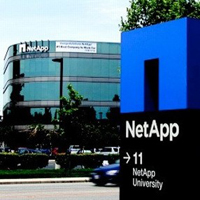 NetApp wants to be at the intersection of two hot trends in a rapidly changing storage industry with its planned $870 million acquisition of startup SolidFire.
NetApp wants to be at the intersection of two hot trends in a rapidly changing storage industry with its planned $870 million acquisition of startup SolidFire.
The five-year-old company has an all-flash architecture for distributed web-scale data centers of the kind that service providers and now some enterprises have adopted so they can grow quickly and efficiently.
That idea, along with the separate trend of hyper-converged systems that combine all the components of a data center into one box, threatens traditional purpose-built storage arrays of the sort that made big vendors like NetApp and EMC what they are today.
SolidFire’s technology will complement NetApp’s existing flash product lines: The FAS series of shared enterprise arrays and the ES line for specialized low-latency workloads like financial transactions, NetApp CEO George Kurian said in an interview Monday.
SolidFire’s systems are geared toward the next generation of data centers, built around commodity hardware controlled by software and with simplified management, Kurian said… Read More
Cloud Computing: 2015 Trends & 2016 Predictions
Excerpted from Cloudwards Report
 Looking back, looking ahead — it’s that time of year. Multiple articles have looked at cloud computing; still in a period of significant and frequent changes.
Looking back, looking ahead — it’s that time of year. Multiple articles have looked at cloud computing; still in a period of significant and frequent changes.
Mergers and acquisitions have changed the financial situations of cloud computing companies.
Innovations and advancements are setting the technological tone for the year past and the one to soon come.
Looking back at 2015, the cloud computing world consolidated with several companies involved in: Mergers, partnerships, or acquisitions
The highest price tag of 2015 was $67 billion, paid by Dell for EMC, including its VMware virtualization software.
Dell was in the news also for a new partnership with Microsoft to create Azure in a Box, a cloud system that can be used in multiple industries.
Meanwhile, Microsoft also announced a partnership with Hewlett Packard that involves each being a preferred partner to the other. The partnership followed in the wake of HP Cloud’s report that it was shutting down its public cloud… Read More
Six Predictions for CES 2016
Excerpted from The Telegraph Report
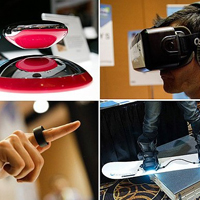 CES in Las Vegas, which runs from Wednesday January 6th to Saturday January 9th, 2016, is traditionally the platform for electronics giants to unveil the latest consumer technology innovations for the coming year. It’s the place where you can get a glimpse into our digital future – at least for the next 12 months.
CES in Las Vegas, which runs from Wednesday January 6th to Saturday January 9th, 2016, is traditionally the platform for electronics giants to unveil the latest consumer technology innovations for the coming year. It’s the place where you can get a glimpse into our digital future – at least for the next 12 months.
Traditionally, consumer tech companies including Samsung, Sony, LG, Huawei, and Panasonic announce new generations of TVs, home appliances, and smartphones here every year.
But increasingly, CES is also becoming a platform for smaller startups and companies to show entirely new types of products – smart home security systems, fuel-efficient delivery drones, and self-driving cars.
Major car manufacturers as well as Internet companies like Netflix and Amazon are increasingly attending the show as well.
Here’s what we know so far about the six major themes running through the event in 2016.
1. Connected Cars. At least nine major automakers and over 100 auto tech firms will appear at CES 2016, according to the Consumer Technology Association (CTA), the trade body that runs CES. Major car companies will unveil new car concepts… Read More
Report from DCIA CEO Marty Lafferty
 The DCIA is pleased once again to have the honor of serving as an Allied Association of the Consumer Technology Association (CTA), the owner of CES.
The DCIA is pleased once again to have the honor of serving as an Allied Association of the Consumer Technology Association (CTA), the owner of CES.
CES is the world’s largest consumer electronics and technology tradeshow that takes place every January in Las Vegas, Nevada.
We are proud to be exhibiting at the 2016 CES in the South Hall of the Las Vegas Convention Center.
This January’s CES offers an overwhelming plethora of exhibits, marketplaces, supersessions, conference tracks, awards, and entertainment with a primary focus on industry innovation.
To highlight just one aspect of CES, its keynote addresses feature an astonishing array of thought leaders and visionaries from across the consumer technology sector.
Don’t miss what these exciting executives have to say about future trends that will impact every one of us in profound and sometimes unexpected ways:
Gary Shapiro, President and CEO of the Consumer Technology Association; Mary Barra, CEO of the General Motors Company; Ginni Rometty, Chairman, President, and CEO of IBM; Brian Krzanich, CEO of Intel; Reed Hastings, CEO of Netflix; WP Hong, President of Samsung SDS; Herbert Diess, CEO of Volkswagen Passenger Cars; and Robert Kyncl, Chief Business Officer of YouTube.
The Future of Urban Mobility Keynote Panel will feature Kent Larsen, Director of the Changing Places Group at the MIT Media Lab; Amnon Shashua, Co-Founder, Chariman, and CTO of MobilEye; Steve Mollenkopf, CEO of Qualcomm; Volkmar Denner, CEO and CTO of Robert Bosch; and Anthony Foxx, Secretary of the US Department of Transportation.
The C Space Keynote, presented by MediaLink will include an exclusive interview with NBCUniversal CEO Steve Burke moderated by Michael Kassan, Chairman and CEO of MediaLink, followed by a panel discussion moderated by Wenda Harris Millard, President and COO of MediaLink with top media and marketing leaders.
And that’s just a sampling of the incredible offerings at the 2016 CES. Look forward to seeing you there. Share wisely, and take care.
10 Technologies That Will Be Most Prominent at CES 2016
Excerpted from eWeek Report by Dan Reisinger
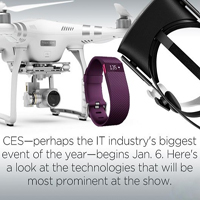 The time is approaching again for what has become the IT industry’s biggest event of the year at least in North America, if not the world — the Consumer Electronics Show (CES).
The time is approaching again for what has become the IT industry’s biggest event of the year at least in North America, if not the world — the Consumer Electronics Show (CES).
Put on by the Consumer Technology Association (CTA) the annual show in Las Vegas, NV has moved far beyond the consumer market and draws big name IT companies including IBM, Intel, and Dell to talk about their latest technologies, update the world on where they see the industry going and ultimately show off some of the products they will place in customers’ hands in 2016.
For many companies, especially smaller ones, CES is their main industry exhibition of the year, and they take advantage of it by showcasing as many new products as possible.
However, despite the huge number of exhibitors and products at the show, CES 2016 — as in previous years — will be dominated by a handful of trends and product types that will be found in every corner of the show floor.
This slide show highlights those trends and makes some predictions on what technologies will be the most prominent at CES when it convenes on January 6th… Read More
My One Big Fat Cloud Computing Prediction For 2016
Excerpted from Forbes Report by Joe McKendrick
 It’s that time of year again, when our web pages, print pages, and email boxes fill up with lists of predictions for the year ahead.
It’s that time of year again, when our web pages, print pages, and email boxes fill up with lists of predictions for the year ahead.
There has been no shortage of cloud computing, big data, and digital business predictions for the year ahead, and many of them are really compelling.
As in years past, rather than add another list to the public discourse, here’s my one simple prediction for cloud in the year ahead.
In the year ahead, 2016, cloud will solidify its emerging role as an innovation machine.
We’ll see a solidification of cloud computing’s role as a gateway to new things — and not just as the latest IT strategy, or as a cost-containment mechanism.
Thanks to cloud, there will be many things people will be able to do that they simply couldn’t do before.
They will be able to experiment, to test, and to pull data and applications from many sources… Read More
Cloud & Security Will Dominate IT Industry in 2016
Excerpted from Software Dev IT Business Net Report
 The year 2016 will see cloud computing rise to new heights, security readiness remain front and center and daunting choices for technology solution providers to alter their business or risk becoming irrelevant, according to members of industry advisory councils at CompTIA, the information technology (IT) industry trade association.
The year 2016 will see cloud computing rise to new heights, security readiness remain front and center and daunting choices for technology solution providers to alter their business or risk becoming irrelevant, according to members of industry advisory councils at CompTIA, the information technology (IT) industry trade association.
CompTIA asked members of its distributor, partner, and vendor advisory councils to share their insights about what’s in store for the IT industry and IT channel in 2016.
Cloud computing, security, and business transformation among channel partners and solution providers dominate their 2016 expectations.
New and expanded use of cloud computing will once again drive much of the business for channel companies next year.
“The year 2016 will be another big year in the ‘main adoption phase’ of cloud services, particularly cloud telecom and managed firewalls,” says Cassandra Anderson, Director, Channel Sales, Crexendo and member of the CompTIA Vendor Advisory Council.
That’s good news for IT companies with strong cloud credentials, according to Sergio Farache, VP, Avnet Technology Solutions… Read More
8 More Cloud Computing Predictions for 2016
Excerpted from InformationWeek Report by Andrew Froehlich
 It’s the time of year where we reflect back on the past 12 months and project what 2016 might have in store for us.
It’s the time of year where we reflect back on the past 12 months and project what 2016 might have in store for us.
Let’s do some forward looking and predict what trends we expect to face over the next year in cloud computing.
For many of us, 2015 marked the point when cloud computing matured and became the go-to platform for a large portion of enterprise applications and data.
While cost savings haven’t really panned out to be a major factor (often due to mismanagement), things like flexibility, scalability, and lower capital expenditures are enticing when compared to traditional in-house data centers.
In 2016, we will likely see improvements of current-generation cloud environments and offerings as well as completely new technologies for application developers to take advantage of.
Migration of legacy applications will continue to be a primary cloud focus for IT staff — as will the development of brand new applications optimized to operate within cloud environments.
And in both cases, security will be a consistent and important theme… Read More
Senate Looks to Beef-Up Network Security
Excerpted from The Hill Report by Cory Bennett
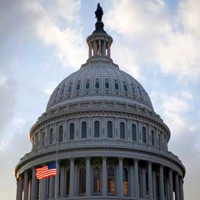 The Senate is looking to ramp-up its network’s cyber defenses.
The Senate is looking to ramp-up its network’s cyber defenses.
The Office of the Sergeant at Arms is seeking contractors to conduct a threat analysis of the Senate’s network security, according to an announcement posted on a government website for contractors.
“The Senate has recently improved the network infrastructure to establish a more robust cybersecurity capability,” said the post.
With its upcoming contracts, the Senate will now be adding a “cyber-threat analysis team” within its Information Technology (IT) Security Branch.
The team will be “focused solely on the analysis of threat/intelligence-based products to maximize the ability of the IT Security Branch to perform proactive cybersecurity operations.”
The Senate will look to the group to better understand digital adversaries and to stay informed about newly discovered vulnerabilities.
The team would then develop strategies to thwart hackers looking to exploit these security defects… Read More
The Board’s Role in Cybersecurity
Excerpted from Spencer Stuart Report by Art Coviello
 There is a common refrain coming from boardrooms: “I am concerned about cybersecurity risk but I’m not sure how to get my arms around the problem.”
There is a common refrain coming from boardrooms: “I am concerned about cybersecurity risk but I’m not sure how to get my arms around the problem.”
Because the issue is so complex and technical, there are general feelings of hopelessness, helplessness and fear.
But as Nobel Prize winner Marie Curie once said, “Nothing in life is to be feared, it is only to be understood. Now is the time to understand more, so that we may fear less.”
I always make the point that while we are aware of the problem — hardly a day goes by that there isn’t a report of some organization being breached — we don’t understand the problem.
We tend to start in the middle with the hackers and their latest attack methodology and sophisticated malware.
Our eyes glaze over when we hear terms like “zero day vulnerability” or “advanced persistent threat (APT).”
In the following paragraphs, I’ll summarize the recommendations I shared in my remarks and in the Q&A to help you gain that understanding and ultimately provide better oversight and support for management on this critical issue… Read More
Security Experts & Officials Diverge on ISIS
Excerpted from NY Times Report by Nicole Perlroth
 George Osborne, the British Chancellor of the Exchequer, said in a speech last month that Islamic State militants were trying to develop the ability to carry out digital attacks on critical systems, like hospitals, air traffic controls and power plants.
George Osborne, the British Chancellor of the Exchequer, said in a speech last month that Islamic State militants were trying to develop the ability to carry out digital attacks on critical systems, like hospitals, air traffic controls and power plants.
In the United States, Clifton Triplett, the new cybersecurity adviser hired by the Office of Personnel Management to help get the agency back on track after a series of hackings traced to China, said this month that he expected the Islamic State, also known as ISIS, might ultimately breach the agency’s systems, too.
But private security researchers who track the Islamic State’s online efforts say the group’s capabilities are in fact not much better than those of tech-savvy teenagers who deface websites for thrills.
That view illustrates a growing perception gap between officials’ fears and what security experts consider a believable threat.
Indeed, two men considered the Islamic State’s most sophisticated hackers have been sidelined. One is dead; the other, in jail. “To date, the attacks attributed or believed to be conducted by ISIS have been embarrassing… Read More
A Trillion Tiny Robots in the Cloud
Excerpted from CloudTech Report by Kelly Stirman
 It’s not words, but how we say them that speaks volumes.
It’s not words, but how we say them that speaks volumes.
By analyzing your tone of voice, a new computer algorithm can predict whether your relationship will last, and it arguably does so more accurately than professional therapists.
Now, I’m not here to advise you on couples therapy. What I’m interested in is how algorithms like this one are going to change the way we live and provide a massive opportunity for the cloud industry.
Popular culture leads us to believe that the future of artificial intelligence (AI) will be a single, magical supercomputer. Think HAL 9000 from 2001: A Space Odyssey, or the ship’s computer on Star Trek. But we’re starting to understand now that we’ve been looking at it all wrong.
x.ai has created an AI-powered personal assistant that schedules meetings for you. In the US alone, there are 87 million knowledge workers who spend up to five hours a week scheduling meetings
The future of AI isn’t about one giant super-intelligence. Instead, it’s about many small, dedicated agents that know you intimately and work on your behalf to improve your everyday life… Read More
Networks Smarter with Stream-Oriented Computing
Excerpted from Embedded Computing Report by Josh Marinacci
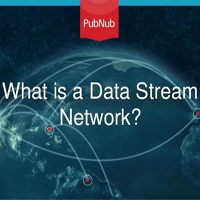 Companies struggle with reliable device signaling for a myriad of reasons: security, dropped connections, catch-up on missed data, firewall/NAT environments, scaling, reliability, replication, redundancy, etc.
Companies struggle with reliable device signaling for a myriad of reasons: security, dropped connections, catch-up on missed data, firewall/NAT environments, scaling, reliability, replication, redundancy, etc.
Much like with content delivery networks (CDNs) such as Akamai, many companies prefer to use a service already proven to work and scale, and instead focus on what they really want to be building, which isn’t infrastructure.
Today’s data stream networks (DSNs) are limited to routing data reliably.
You can bring data from many devices to a single point, or from a single point to many devices, or even many to many.
This is of huge value, of course, but one thing doesn’t change: the data.
The data itself is moving around, but it isn’t changing. It’s just a stream of packets going from one end to another.
But what if you could change the data mid-stream? We think that would open lots of new and interesting possibilities.
Consider this hypothetical example: Suppose you want to build a chat app for millions of junior high kids to talk with each other. You might want to filter for profanity. Conceptually this is a simple thing, just an “if” statement… Read More
WWW Is 25 – What Will It Look Like at 50?
Excerpted from Forbes Report by Theo Priestley
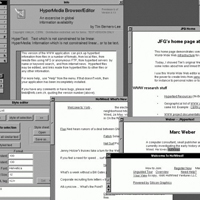 The World Wide Web celebrates its 25th anniversary this week, when the first website went online December 20th 1990 at CERN.
The World Wide Web celebrates its 25th anniversary this week, when the first website went online December 20th 1990 at CERN.
Although an internal site, it wasn’t made available to the public until almost 12 months later and, at that point, history changed forever.
But what will the web look like in 25 years, and how marked a change from today will it be?
Today we throw around the terms “dynamic,” “responsive,” and “mobile first” to describe the web and websites as we know them.
But in 25 years, the web may evolve to be considered a living entity in its own right, and the “Big Bang,” that point in time we can point to when it started, will be attributed to what we know today as The Internet Of Things (IoT).
With billions of devices and humans all interacting, sharing, and processing data among one other, what we have is essentially a living information network, or a living web that spans the planet.
Every device will have the processing capability for complex analysis and extrapolation of the information being received and sent… Read More
Looking to the Future with Cloud Computing
Excerpted from Infographic by the Carahsoft Team
 The combination of cloud computing and open source technology provides the potential for government agencies to invest in new, enterprise-level software while ensuring they are using solutions that quickly adapt, guarantee agility, and comply with a growing list of federal IT mandates.
The combination of cloud computing and open source technology provides the potential for government agencies to invest in new, enterprise-level software while ensuring they are using solutions that quickly adapt, guarantee agility, and comply with a growing list of federal IT mandates.
In fact, some estimates suggest that migrating to cloud computing can help save the US government nearly $20 billion.
And with policies like FITARA and FedRAMP, now is the time for agencies to really look over their IT spending and cloud solutions.
Check out the infographic here to learn how cloud computing can save the government money, reduce the strain of expensive and inflexible architectures, and safeguard data privacy for all stakeholders.
Opening the cloud: in 2013, 92% of government IT players believed platform-as-a-service (PaaS) would let their agency take full advantage of cloud computing benefits. 95% believed their agency would benefit from migrating to PaaS — most notably through reduced costs and increased security. But, only 12% were using PaaS.
Open source and cloud computing grow alongside each other… Read More
Cloud Computing Growth to Rise
Excerpted from IHotDesk Report
 Cloud computing growth is set to continue into 2016, according to new findings.
Cloud computing growth is set to continue into 2016, according to new findings.
Cloud computing is a way of delivering IT services to users without the need to buy, install or manage any infrastructure: more flexible, zero investment, and easily scalable with service levels and security in mind.
A report published by Technavio predicted that ability of cloud-based solutions to outsource work to third-party organizations will help to boost take-up of cloud technologies.
However, the cloud computing market still remains quite fragmented and this is mainly due to the presence of numerous small, medium, and large players, which are providing more innovative solutions to the market all the time.
The research also predicted that in the US, the cloud computing market will grow at the compound annual growth rate of around 24 per cent by 2020.
In the teaching sector in particular, the report claimed that cloud computing plays a vital role in reducing the costs of building and maintaining the infrastructure associated with the traditional form of teaching.
When it comes to cloud technology, the public sector will be responsible for the majority (66 per cent) of the total market share by 2020. .. Read More
Coming Events of Interest
CES — January 6th-9th in Las Vegas, NV. The world’s gathering place for all who thrive on the business of consumer technologies. CES has served as the proving ground for innovators and breakthrough technologies for more than 40 years.
ADRM Working Group Meeting — January 28th via Global Videoconference. Contact the DCIA for information about joining the group and attending the meeting that will focus on interoperability among DRM platforms and simplifying DRM implementation.
Industry of Things World USA — February 25th-26th in San Diego, CA. A new international information exchange forum featuring four concurrent tracks covering business model generation, technology and infrastructure, data management, and security.
Delivery of Things World — April 25th-26th in Berlin, Germany. DevOps specialists, continuous development strategists, architect newbies, development geeks, and cloud geniuses from across the spectrum of DevOps transformation come together at this stimulating and innovative event.
DataCloud Europe 2016 — June 8th-9th in Monte Carlo, Monaco. The 2016 conference will focus on cloud computing advances and changes in data management, with a stellar line-up of speakers including global infrastructure leaders and subject matter experts.
Cloud and DevOps World Forum 2016 — June 21st-22nd in London, England. Now in its eighth year, C&DWF is firmly established as the leading content-led exhibition for the European Cloud and DevOps community and the premiere meeting place for CIOs.
Security of Things World — June 27th-28th in Berlin, Germany. Topics include securing cyber physical systems for IoT, expanding IT security with intelligence-led ops, business continuity management considerations, data privacy in an interconnected world, and security strategies.
Industry of Things World Europe — September 19th-20th in Berlin, Germany. IoT business models, new IoT markets and strategies, product lifecycle management, next generation data handling and value assessment, IoT organizational impacts, and IoT security issues.
